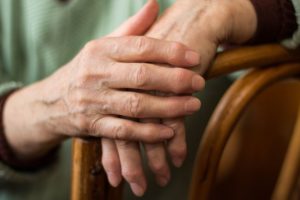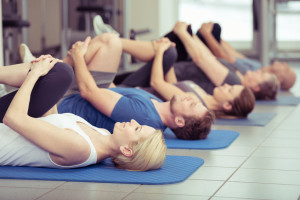We are thrilled to announce that several esteemed physicians from Advanced Orthopedics and Sports Medicine Institute (AOSMI) have been recognized as NJ Top Docs for 2024. This prestigious honor underscores our commitment to providing exceptional orthopedic care and advanced treatment options for our patients in New Jersey.
About the Top Docs Awards
The Top Docs awards are based on a rigorous selection process. Nominees complete a comprehensive qualification questionnaire covering their education, training, years in practice, continuing education, licensing, publications, charitable work, professional appointments, and achievements. Each component is verified to ensure that nominees meet the high standards set by the Top Docs organization. Board certification is required for applicable specialties, and nominees must also undergo a thorough review of malpractice and licensing records to confirm there are no serious issues. Patient reviews are collected and compiled to provide a comprehensive assessment of each nominee’s performance.
Join us in celebrating the remarkable accomplishments of the following Top Docs nominees:

Michael J. Greller, MD, MBA, CPE, FAAOS
Dr. Michael J. Greller is a Board-certified orthopedic surgeon specializing in sports medicine and joint preservation. His comprehensive approach to patient care, combined with his administrative expertise, has established him as a leader in orthopedic surgery. Dr. Greller’s commitment to excellence is evident in both his clinical and organizational contributions to AOSMI.

Ali Valimahomed, MD, FAAPMR
Dr. Ali Valimahomed is a dual Board-certified specialist in Pain Medicine and Physical Medicine & Rehabilitation. His expertise lies in comprehensive pain management and restoring function to patients suffering from chronic pain conditions. Dr. Valimahomed’s holistic approach and dedication to improving patients’ quality of life make him a standout in his field.

Alison Dewaters, DPM, FACFAS
Dr. Alison Dewaters is a Board-certified podiatric surgeon with a focus on reconstructive foot and ankle surgery. As a Fellow of the American College of Foot and Ankle Surgeons, Dr. Dewaters is renowned for her surgical precision and compassionate patient care, ensuring optimal outcomes for her patients.

Arth Patel, MD, MPH
Dr. Arth Patel is a Board-certified Primary Care Sports Medicine physician with a background in Family Medicine. He is dedicated to the non-operative management of musculoskeletal injuries, promoting wellness and injury prevention. Dr. Patel’s patient-centered approach and emphasis on holistic care have earned him a well-deserved place among NJ’s top doctors.

Eric Buxbaum, DO, FAAOS
Dr. Eric Buxbaum is a Board-certified orthopedic surgeon with expertise in hip and knee replacement surgery. His focus on advanced surgical techniques and patient-centric care has made him a trusted name in joint health. Dr. Buxbaum’s approach combines precision with compassion, ensuring his patients receive the best possible care.

Joseph Tauro, MD
Dr. Joseph Tauro is a nationally recognized expert in shoulder, sports and degenerative joint disorders, known for his pioneering techniques in arthroscopic surgery. As a Board-certified Orthopedic Surgeon, Dr. Tauro’s contributions to the field have set new standards in patient care and surgical excellence. His innovative approach ensures that patients receive the most advanced and effective treatments available.

Stacey Gallacher, MD, FAAOS
Dr. Stacey Gallacher is a dual Board-certified orthopedic surgeon specializing in shoulder and elbow surgery and trauma care. Her precise surgical skills and compassionate patient care have made her a trusted specialist in her field. Dr. Gallacher’s dedication to improving patient outcomes through both surgical and non-surgical interventions is commendable.

Gerardo Goldberger, DO, FAOAO
Dr. Gerardo Goldberger is a Board-Certified orthopedic surgeon and Fellow of the American Osteopathic Academy of Orthopedics. His specialization in sports medicine and arthroscopic surgery allows him to effectively treat a wide range of athletic injuries. Dr. Goldberger’s dedication to his patients and innovative treatment methods make him a top choice for orthopedic care.

David Kirschenbaum, MD
Dr. David Kirschenbaum is an hand and upper extremity Fellowship-Trained orthopedic surgeon. His extensive experience and commitment to cutting-edge techniques provide patients with innovative solutions for their orthopedic needs. Dr. Kirschenbaum’s dedication to excellence is reflected in his high patient satisfaction and successful surgical outcomes.

At AOSMI, we are incredibly proud of our doctors’ achievements and their unwavering commitment to providing the highest quality of orthopedic care. Being named NJ Top Docs is a testament to their expertise, compassion, and dedication to patient well-being. We extend our heartfelt congratulations to each of these outstanding physicians and look forward to their continued success in advancing orthopedic and sports medicine.
For more information or to schedule an appointment with any of our top doctors, please contact our office at (732) 335-6727 and schedule an appointment online. Together, we can achieve better health and a higher quality of life.
As Fall wraps us in its chilly embrace, you can bet basketball courts and ice skating rinks across New Jersey are buzzing with activity. Whether you’re part of a school team, hitting the court for a bit of fun, or gliding across the ice with friends and family, these Fall sports are a great way to stay active. With all the excitement, there’s also a chance of bumps, bruises, and sometimes more serious injuries. At AOSMI, we believe in patient education. We want to teach you about the more common Fall sports injuries, so that you are prepared and so that we can work together to get you back to your strongest self.
Common Fall Basketball Injuries:
Common Injuries: Some of the most common injuries in basketball are ankle sprains and anterior cruciate ligament (ACL) tears, both of which impact performance and long-term joint health.
Causes of Injury: Ankle sprains arise from the high-impact nature of basketball, particularly during rapid direction changes or awkward landings after jumps. ACL tears are often linked to abrupt stops, pivots, or sudden directional changes, exerting stress beyond the knee joint’s normal capacity.
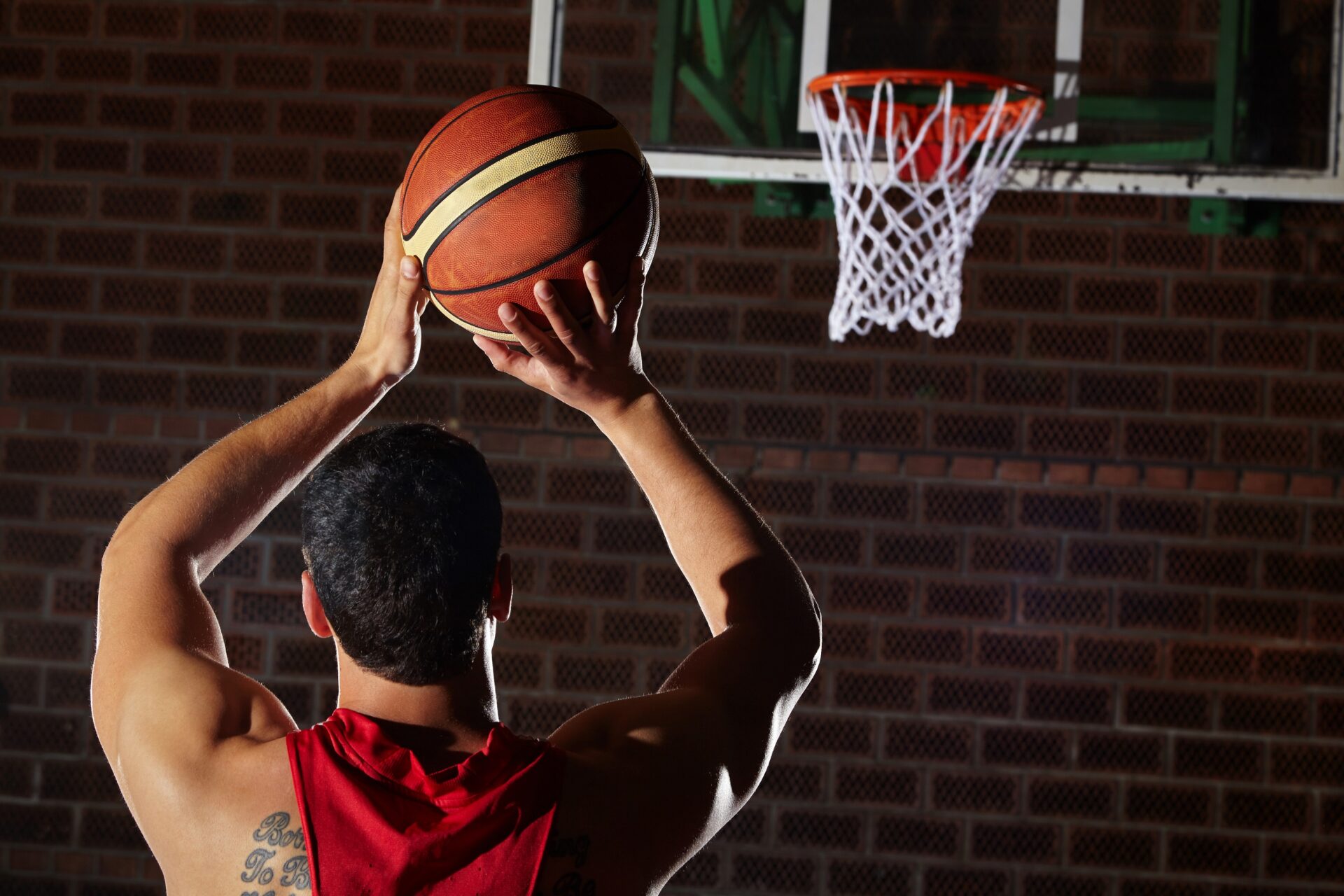
Treatment and Surgery: Initial treatment for ankle sprains involves the R.I.C.E. protocol (Rest, Ice, Compression, and Elevation) to reduce swelling. ACL tears may necessitate surgical reconstruction using the patient’s tissues or grafts. At AOSMI, we are on the cutting-edge of orthopedic treatment – as such, we offer the BEAR (Bridge-Enhanced ACL Restoration) Implant that allows for natural healing without the need for grafts.
Physical Therapy Rehabilitation: Post-surgery, physical therapy becomes pivotal in restoring strength, flexibility, and joint stability. Progressive exercises targeting muscle strength, balance, and proprioception form the core of rehabilitation, guided by physical therapists to ensure a gradual return to play, minimizing the risk of re-injury. At AOSMI, our physical therapists tailor their treatment plans to your unique injury, ensuring a personalized approach.
Common Fall Ice Skating Injuries:
Common Injuries: Ice skaters frequently contend with fractures, particularly in vulnerable areas like the wrist and hip, because of the dynamic and sometimes acrobatic nature of the sport.
Causes of Injury: Falls on the ice, whether during jumps, spins, or routine skating, expose skaters to the risk of fractures. The hard frozen surface amplifies the impact, leading to fractures, especially in areas like the wrist and hip.

Treatment and Surgery: Immediate immobilization is important for managing fractures sustained during ice skating. Wrist fractures may require casting or splinting, while hip fractures may necessitate surgical intervention, involving plates, screws, or other fixation devices for proper alignment and stability.
Physical Therapy Rehabilitation: Rehab for ice skating injuries takes a comprehensive approach. Range-of-motion exercises are crucial for regaining flexibility, while progressive weight-bearing activities aid in rebuilding strength. Physical therapists craft tailored plans, integrating exercises that address the unique challenges of ice skating injuries, with a focus on enhancing balance, coordination, and functional movement. This personalized rehabilitation aims not only to restore functionality but also to prevent future injuries, facilitating a safe return to the ice.
By addressing the specific Fall sports injuries associated with basketball and ice skating, we aim to equip you with the knowledge needed to navigate the season safely. At AOSMI, our team is committed to providing the highest quality orthopedic and physical therapy care to our patients across New Jersey. If you are experiencing pain or injury from these sports, please request an appointment today. We are dedicated to helping you live a healthier, stronger life.

Smartphones have become so pervasive; it’s almost as if they are an extension of our bodies. With built-in fitness apps, instant access to personal social networks and support, and the ability to retrieve all the knowledge of the world wide web on demand, the health benefits of smartphones seem endless. Although these benefits are very real, there are also very real negative effects that come with excessive use of smartphones and other devices. Unsurprisingly, our hands receive the brunt of the wear and tear our bodies experience from constant texting, talking, searching, and all the other activities, so integral to our day-to-day life, that are carried out on these devices.
Here are some common orthopedic injuries and conditions that can result from unrestrained smartphone use. Although they certainly existed before smartphones and can have other causes, the incidence of many of these conditions have increased proportionally as smartphones have come into greater and greater use.
- “Text Claw.” Although this is not a formal diagnosis or condition, this term was coined to describe the pain and numbness in the hands and wrists experienced by frequent tech-users. Text claw might also be used to describe a condition called Cubital Tunnel Syndrome, in which numbness or cramping is experienced in the the ring and pinky fingers and hands.
- Carpal Tunnel Syndrome. Preliminary research indicates that there may be a link between smartphone use and Carpal Tunnel Syndrome.
- Repetitive Strain Injuries (RSI). When muscles and joints are used excessively, particularly in awkward or unusual positions, repetitive stress injuries can result. Symptoms can include stiffness, pain, or aching in the hands or wrists.
Luckily, there is no need to throw your smartphone away to experience relief from these and other conditions related to smartphone use. Cutting back is never a bad idea, of course, and preventative measures, such as wrist stretching, can be taken to avoid an injury. If you are experiencing pain in the hands or wrists, an orthopedic specialist can help. Contact AOSMI today.
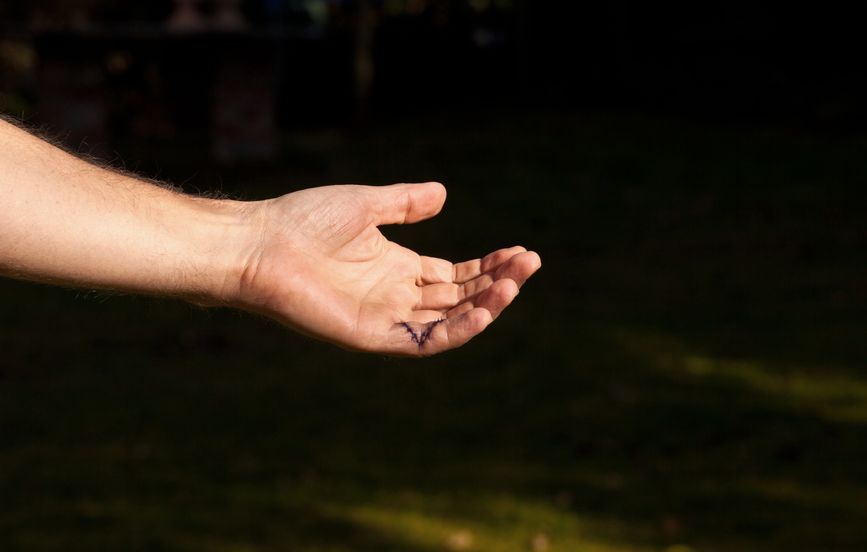
Breaking or fracturing of the pinky is an all too common injury that should not be taken lightly. Because of the location of the pinky, it is often possible for the hand to continue to function close to normally in the event of an injury only to that finger. However, a broken or fractured pinky should be seen immediately by an orthopedic specialist.
How do I Know if My Pinky is Injured?
A pinky injury is frequently caused by trauma to the finger resulting from sports and other physical activities but can also occur during day-to-day routines like cleaning or cooking. Individuals with certain orthopedic conditions, such as osteoarthritis or calcium deficiencies, are more susceptible to a pinky injury.
A broken or fractured pinky can be identified by some or all of the following symptoms:
- Swelling
- Bruising or discoloration
- Deformity
- Limited range of motion
- Stiffness
If left untreated, even a minor injury can result in permanent damage which can affect functioning of the wrist and hand as a whole.
What is the Treatment for a Broken Pinky?
If treated quickly and effectively, the average time it takes for a pinky to heal is three to four weeks. Treatment typically involves applying a splint or cast, which prevents the finger from moving and allows the natural healing process to take place. In some cases, bone alignment must be corrected surgically, and follow up physical therapy is sometimes required. In these more severe cases, healing can take as long as ten weeks.
If you believe you may have experienced an injury to your pinky, even if you do not recall an accident or trauma to the finger, do not wait to receive treatment. Contact AOSMI today. One of our orthopedic specialists will determine if any injury exists, its extent, and the best course of treatment.
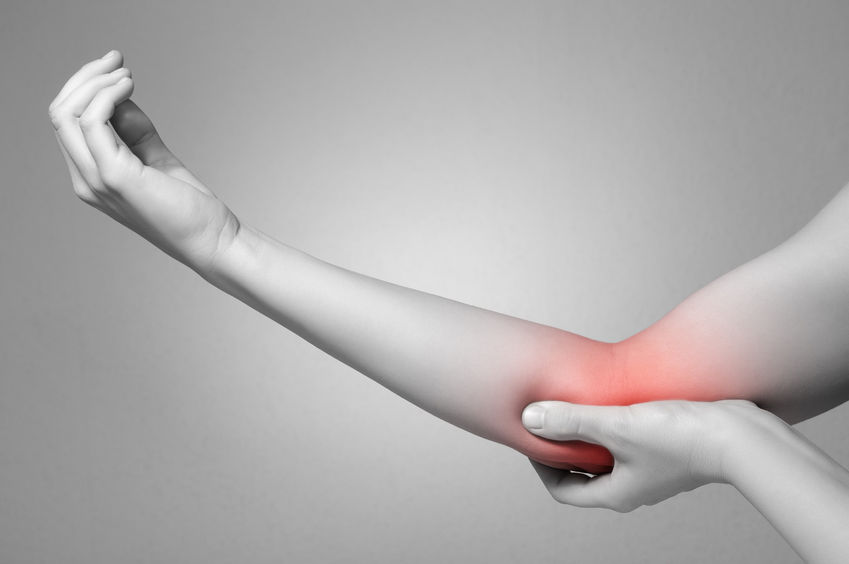
Cubital Tunnel Syndrome, otherwise known as ulnar nerve entrapment, happens when the ulnar nerve experiences increasing pressure or compression. Have you’ve ever bumped your elbow against a hard surface and felt a sharp stinging pain, otherwise known as hitting your ‘funny bone’? That’s your ulnar nerve in action.
Second after Carpal Tunnel Syndrome, Cubital Tunnel Syndrome is the most common nerve compression that happens in the arm. The ulnar nerve can be found in a small tunnel of this in the elbow, also known as the cubital tunnel and can be compressed when your elbow is bent. This pressure on your ulnar nerve can cause a considerable amount of pain or discomfort, and may get to the point where you could lose the function of your hand (dominant or nondominant). In general, men are more likely to be affected by Cubital Tunnel Syndrome than women. People with jobs that have them doing repetitive elbow movements and prolonged elbow flexion are even more likely to experience Cubital Tunnel Syndrome.
You might have Cubital Tunnel Syndrome if you feel a numbness and/or pins and needles from the inside of your forearm to your hand. Typical symptoms of Cubital Tunnel Syndrome include; tenderness on the inside of your elbow, pain or numbness after keeping your elbow bent for a long period of time, and a difficulty in feeling the difference between sharp and dull objects when they touch the inside of your forearm. If Cubital Tunnel Syndrome goes untreated these are some symptoms you might experience; clumsy hands, having the small muscles of the hands waste away, and something known as ulnar claw hand which is when your fingers bend inwards.
If you find yourself experiencing any of these symptoms be sure to contact an orthopedic specialist. Make an appointment today with the Advanced Orthopedics and Sports Medicine Institute for a NJ pain management specialist.
With more than 50 million Americans (one in five adults) suffering from the chronic pain of Arthritis, May has been named National Arthritis Awareness Month. Why all the recognition? Arthritis is the number one cause of disability in our country and affects over 300,000 families. While commonly recognized, little is still understood about the illness and most do not understand the catastrophic effects Arthritis has on those who suffer and those who love them. NJ physical therapy centers report that a large percentage of their patient load is comprised of those looking to ease the physical pain of the illness while maintaining mobility. As we enter into May, let’s stop and take a look at a few facts about Arthritis.
- By 2030, up to 67 million adults are expected to be living with Arthritis.
- Arthritis is not just an illness that affects those in old age. Nearly 300,000 infants, kids, and teens suffer with a form of the disability.
- An average of 172 million workdays are missed every year by those suffering from Arthritis, and these workers are less likely to maintain regular employment than those without the disability.
- On average, the country sees one million hospitalizations a year due to Arthritis-related injuries and conditions.
- $156 billion dollars worth of lost wages are seen every year as a result of the illness.
Now that you understand more about the condition, how can you help?
There are a number of reputable organizations dedicated to helping those with Arthritic conditions. To get involved with the cause, contact the Arthritis Foundation to learn about making donations, volunteering to help with their events and signing up for their e-newsletter. If you are suffering from the pain of Arthritis yourself, call AOSMI today to speak with an orthopedic specialist about how physical therapy and pain management services can help you.
Whether you’re recovering from a sports injury or are simply experiencing the annoyances of physical pain from the daily grind of day to day living, there are a few simple movements you can try to help relieve your pain. As contrary as it seems, stretching is your saving grace when it comes to dealing with physical pain. Here we offer a few simple movements to get your muscles and joints moving and relieve common pains. As always, if the pain persists or worsens, call an orthopedic specialist to have it looked at. Stretching will not treat physical injuries or solve underlying conditions.
Simple Movements To Relieve Body Pain:
- Hamstring Floor Stretch: Designed to relieve lower back and leg pain, this hamstring stretch move will loosen the leg muscles and provide relief from cramping, spasms, and generalized aches from overuse. To execute, simple lay on your back with both knees bent. With both hands placed behind the knee, lift one leg at a time for 30 seconds. Lift each leg five or six times and then rest.
- Knee To Chest Stretch: This easy stretch is designed to ease pressure on the glutes and help reduce hip pain. To execute, lay on your back with both knees bent. Place your hands around one knee and pull that leg up to your chin (keeping it bent). Return to the starting position and then move to the other leg. Do four or five lifts on each side for maximum relief.
- Spinal Stretch: Your spine controls nearly all your movements. Stretching the muscles, joints, and ligaments that comprise this lifeline will provide all-over relief from aches and pains. An easy spine stretch involves lying on your back with legs outstretched and your arms spread out. Take your left arm and reach over your body to grab your right knee. Pull that leg over the left side of your body (with the knee bent) and hold for twenty seconds before returning to the starting position. Do the same for the other side. Do the motion between five and six times on each side for maximum effect.
These simple movements should keep you pain-free all summer. Again, if pain persists, is acute, or worsens with stretching, call AOSMI to request an appointment with an orthopedic specialist and have your injury diagnosed and treated.
Advanced Orthopedics and Sports Medicine Institute is a medical practice located in Freehold and Monroe, NJ, our medical professionals are experts in orthopedic surgery, joint replacement, sports medicine, integrative wellness, spine care, physical therapy, and more.
Musculoskeletal health refers to the overall health of the muscles and bones that comprise your body’s systems. Understanding the key elements that go into keeping your musculoskeletal system in working order is key to preventing sports injury, body pain, and illness. Our team of New Jersey orthopedic surgeons has comprised a short list of what you need to know about your body’s musculoskeletal system.
What You Need To Know About Musculoskeletal Health:
- Nixing The Soda Can Save Your Body: Soda, especially regular and diet colas, have been shown to lead to osteoporosis. The reason for this lies in the fact that these popular drinks prevent calcium absorption and lead to lower bone density. Be kind to your bones and drink water rather than soda.
- Stand Up Straight: Your mom was right; your posture is crucial to overall health. Poor posture can lead to strains in the wrists, shoulders, elbows, and back and cause persistent pain and muscle damage.
- Get Moving: Whether you’re interested in weight loss or not, getting up and moving around on a regular basis is crucial to musculoskeletal health. Living a sedentary life has been shown to cause painful and dangerous loss of muscle and bone strength and puts you at risk for a host of injuries.
- Slim Down For Your Health: Maintaining a healthy weight is about more than fitting into the latest summer fashion trends. Being overweight has been shown to affect everything from cardiovascular health to the performance of your bones and muscles. The main reason is that all of this extra weight puts undue pressure on your bones and muscles and leads to deterioration and possible injury. In keeping with our previous tip, get up and get moving to keep your system from having to overwork itself to support the weight of your movement.
- Sleep Well: All too often our society places prestige on working around the clock and missing out on crucial sleep time. This does more than lead to overtired, cranky Americans. It is putting all of our systems at risk for disease, injury, and increased pain. To highlight this point, studies have shown that one night of missed sleep can trigger cellular action that can lead to tissue and muscle deterioration. Imagine what regular lack of sleep is doing to your body!
Now that you know the basics of musculoskeletal health, incorporate these tips into your daily life for improved overall health and a reduction of aches and pains. If the pain persists or your suffer an injury, call AOSMI to request an appointment with a sports injury specialist today.
Advanced Orthopedics and Sports Medicine Institute is a medical practice located in Freehold and Monroe, NJ, our medical professionals are experts in orthopedic surgery, joint replacement, sports medicine, integrative wellness, spine care, physical therapy, and more.
Proper functioning of the hands and wrists is essential to many activities of daily living from cooking and cleaning to personal hygiene, performing work duties and more. Overuse and fragility of the small bones in these parts of the body leave the hands and wrists vulnerable to a variety of injuries. Such injuries can include:
- Sprains
- Strains
- Fractures
- Dislocations
- Carpal tunnel syndrome
- Arthritis
- Tendon pain
- Sports injuries
There are a number of non-surgical options available for these and other conditions that can arise from injuries to the hands and wrists.
Splinting and Bracing
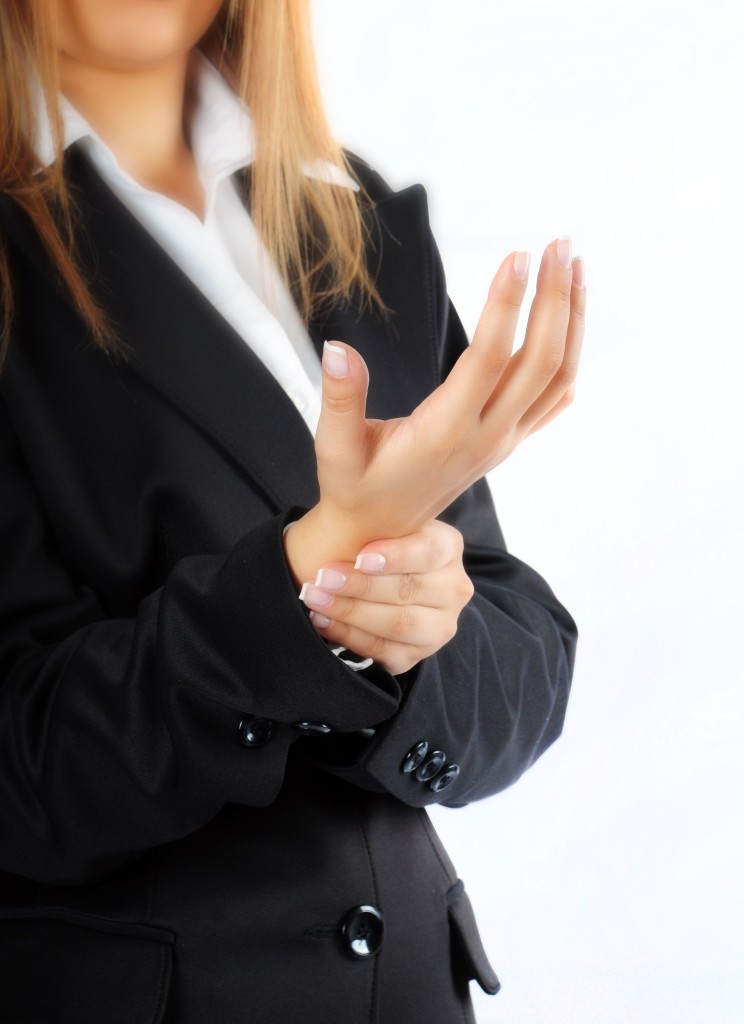 Placing the injured wrist, hand, or finger into a splint or brace keeps the injured area from moving and allows it time to rest and heal. Depending on the severity of the injury, the splint or brace may need to be worn constantly for a period of time or, in some cases, may only be worn during sleep. Splinting and bracing can be helpful in treating arthritis, carpal tunnel, and a number of impact injuries.
Placing the injured wrist, hand, or finger into a splint or brace keeps the injured area from moving and allows it time to rest and heal. Depending on the severity of the injury, the splint or brace may need to be worn constantly for a period of time or, in some cases, may only be worn during sleep. Splinting and bracing can be helpful in treating arthritis, carpal tunnel, and a number of impact injuries.
Temperature Regulation
Applying hot or cold packs to the affected areas of the hand or wrist as directed by a physician can alleviate symptoms of some conditions, such as arthritis and carpal tunnel.
Injections
In some cases, your orthopedic specialist may recommend the use of steroid injections to treat certain hand and wrist injuries. Studies have shown that steroid injections can be effective in the treatment of carpal tunnel, as well as tendon and ligament injuries.
Occupational Therapy
An occupational therapist can design a specialized regimen of exercises for patients with hand injuries. Over a period of time, practicing these exercises can assist in restoring proper functioning of the wrist, fingers, and hands.
Massage Therapy
For repetitive stress injuries to the hands and wrists, including carpal tunnel syndrome and tendonitis, massage can alleviate pain and improve functioning in affected parts of the body.
Request an appointment with Advanced Orthopedic and Sports Medicine Institute today. One of our orthopedic specialists can determine whether any of these options could be used as an alternative to surgery for your hand or wrist injury.
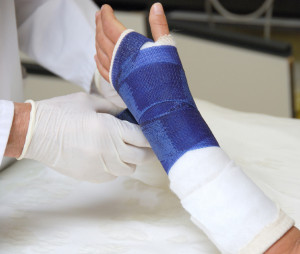 Among patients dealing with joint problems, the hand, wrist, and elbow are common trouble spots. These closely associated parts have many complex functions that can be impaired or even restricted entirely by the pain and discomfort associated with many common conditions. Orthopedic treatments for the hand and wrist can address these issues in a variety of ways. The first and most easily employed methods are non-operative treatments, which restore function without requiring surgical techniques. Long-range treatment plans guide the progress of non-operative care, gradually addressing stress and weakness in the muscles or joints. AOSMI physicians research the latest advances and use the most up-to-date techniques when assisting patients through non-operative orthopedic care to ensure each case includes the most modern and suitable methods.
Among patients dealing with joint problems, the hand, wrist, and elbow are common trouble spots. These closely associated parts have many complex functions that can be impaired or even restricted entirely by the pain and discomfort associated with many common conditions. Orthopedic treatments for the hand and wrist can address these issues in a variety of ways. The first and most easily employed methods are non-operative treatments, which restore function without requiring surgical techniques. Long-range treatment plans guide the progress of non-operative care, gradually addressing stress and weakness in the muscles or joints. AOSMI physicians research the latest advances and use the most up-to-date techniques when assisting patients through non-operative orthopedic care to ensure each case includes the most modern and suitable methods.
Beyond non-operative treatment, AOSMI’s expert orthopedic specialists can address hand and wrist issues with surgical procedures: these techniques are most often recommended in cases that include significant trauma or serious wear and tear. Hand and wrist surgeries are especially helpful for patients with major sports injuries. These surgeries can include tendon and ligament repair, artificial joint replacement of the finger, thumb and elbow fusion, and more, each method selected carefully to match each patient’s individual needs. The AOSMI is dedicated to optimal care in every patient interaction: find out more about the practice’s philosophy and hand and wrist capabilities through the online portal or by contacting a company expert.


